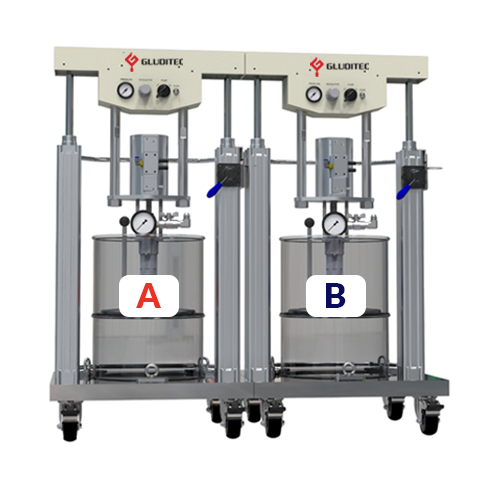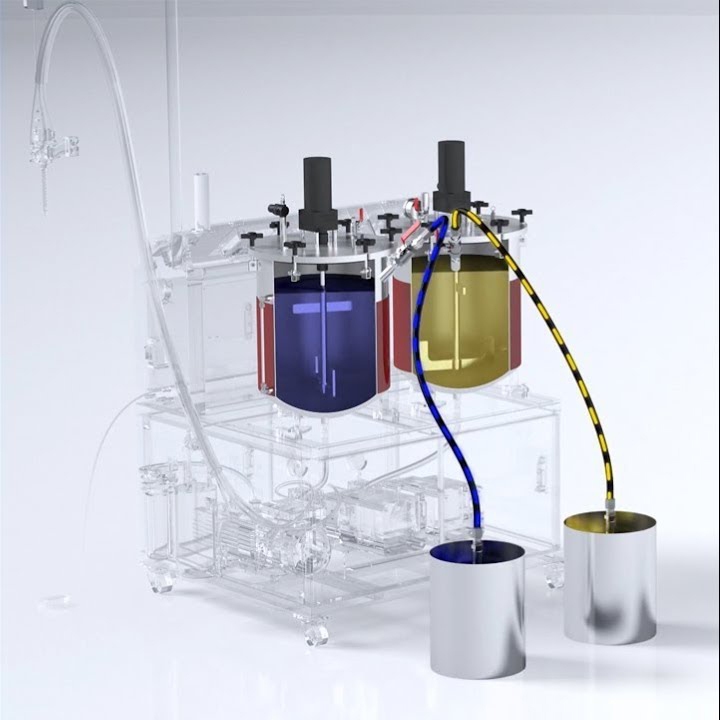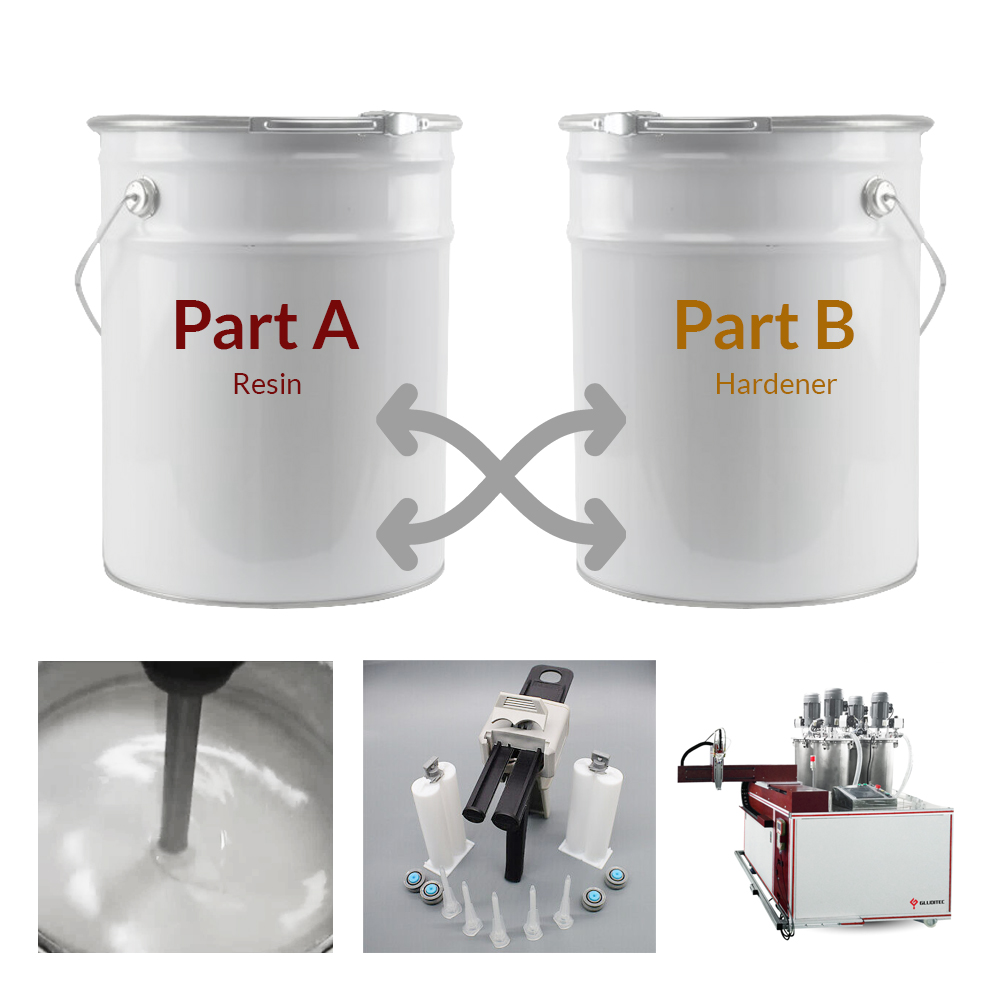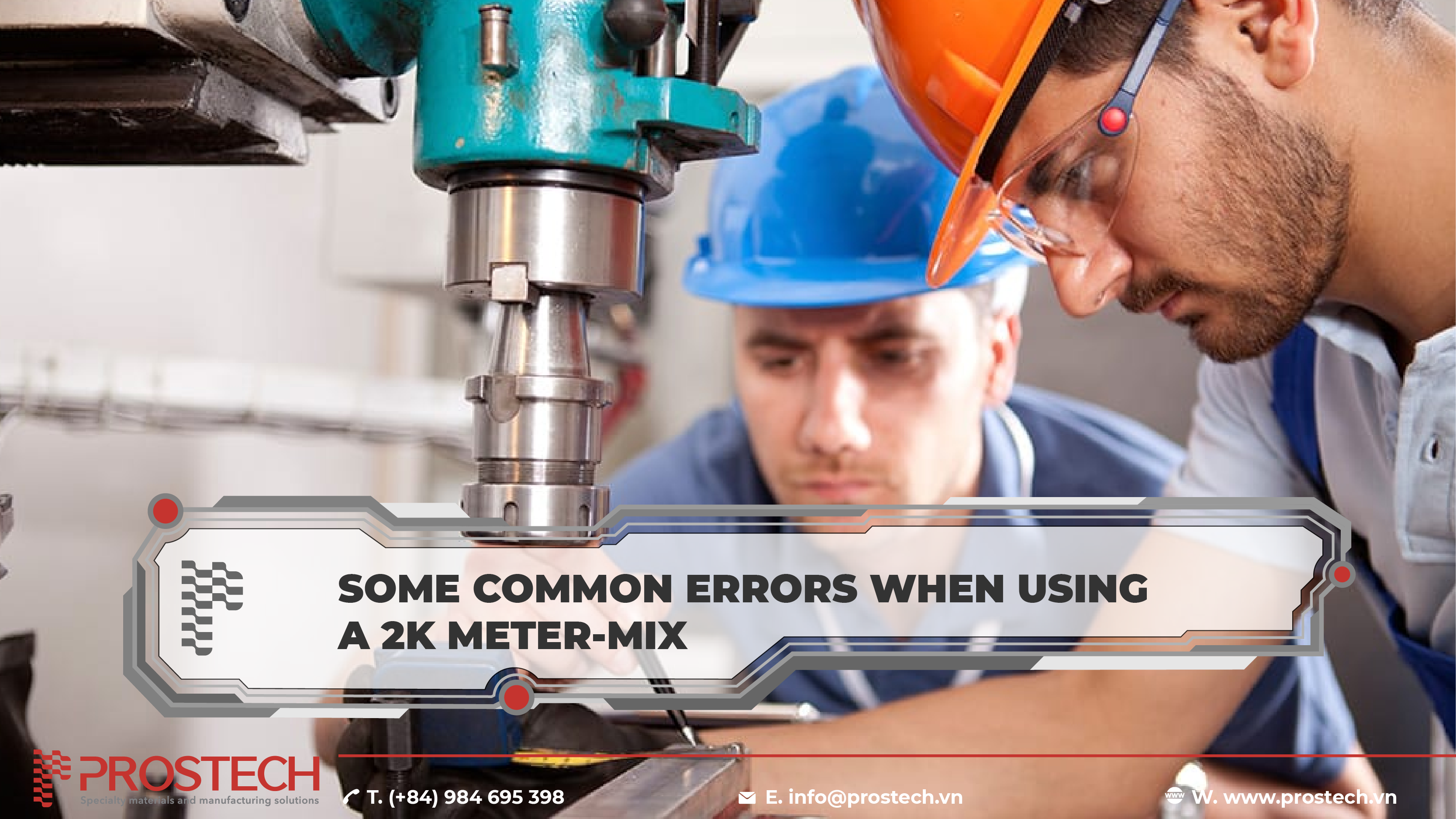Pros Technology is confident to provide total solutions to Dispensing Systems all over the world with high-quality and reasonable price products. Do not hesitate to contact us for more information and quotation for Dispensing Systems and its components.
What is 2K Metermix?
In the world of bonding, filling, and encapsulating the term “meter-mix” refers to the process and the hardware required to accurately manage, blend, and dispense multi-part fluids in an automated fashion. Most often in electronics and industrial dispensing, meter-mix dispensing is based upon processing a 2-part adhesive that is supplied as a base component plus a hardener component which when mixed in the proper volume and ratio cause a chemical chain reaction that initiates the curing process of the mixture. The reaction time can be as little as a few minutes up to hours or even days before achieving its final cured state. Once a 2-part adhesive is mixed, the end user should be aware of the specified “pot life” as this is the duration of time where the mixture can be used before the viscosity (or thickness of the liquid) increases beyond its useable state. In automated dispensing, once a mixture changes viscosity by even as little as 5-10%, this can have a negative effect on the consistency and repeatability of the process. Careful planning needs to take place to properly specify the correct metering and dispensing equipment.
Meter-Mix Applications
A 2-component adhesive formulation may be chosen over a 1 part adhesive due to performance benefits such as short cure times, enhanced durability, or improved adhesion. One of the most widely used applications of meter mix equipment is in the potting process where an enclosure with a circuit board is filled to a certain level to protect the electronics from moisture, dust, foreign objects, etc… A potting process can be applied to protect small electronic sensors used in the medical or automotive industry, or used to fill larger devices such as motor controller housings, LED video board assemblies, or electric batteries. A potting process can be a simple benchtop configuration where an operator may position a housing underneath a nozzle then step on a foot pedal to initiate the dispense into a single location for a given amount of time or preset volume. In this case, the viscosity of the potting material is low enough to freely flow into all required areas.

More intricate 2-component dispensing applications may require a multi-axis robot to drive a nozzle along a preprogrammed path to apply very small beads or deposits of adhesive to bond a mobile electronics assembly or apply varying amounts of thermal gap filler materials with high accuracy to an automotive engine control module. Other precision applications may include the staking of components to a circuit board or dispensing an encapsulant overexposed wire bonds. In these applications, automation must be taken into consideration in order to apply medium to high viscosity adhesives at the proper flow rate and pattern in order to implement a successful process in production.
- LEDs
- Aerospace
- Telecomunications
- Automotive
- Consumer Electronics
- Medical Devices
Components of Meter-mix Systems
Metering Pumps, including:
- Gear
- Rod/Piston
- Progressive Cavity
Mixing & Dispensing
How to choose a right 2K Meter-mix
Step 01: Define parts A and B materials. The material manufacturer may need to provide information on the following:
a. Viscosity in centipoise
b. Specific Gravity (or density)
c. Base chemistry (silicone, urethane, epoxy, etc.)
d. Identify any filler materials
e. Identify any special properties such as shear thinning or thickening
f. Provide the Technical data sheet and MSDS
2. Define the mixing ratio and target accuracy of the chemistry.
For example a. A specification of 10:1 +/- 10% translates to an acceptable variation on the mix ratio from 9:1 to 11:1. Is this an acceptable range for the process or is something more like 2-3% required?
Step 02: Define the production rate. This is typically expressed through the items below: a. Shot size with accuracy i. Accuracy Example (10gram shot +/- 10%) b. Flow rate with accuracy i. Accuracy Example (100grams/minute +/- 10%)
Step 03: Define the supply system. The previous 3 areas will lead to a target amount of fluid to use within the system. The below questions will help determine the final configuration:
a. What are the available material container sizes?
b. Which size is intended for production?
c. Does this size make sense with the usage rate in production?
d. If there are fillers that can settle out of the fluid, do they require agitation or recirculation? If yes, the supply tank and flow path may need special options.
Contact us for more information:
Hotline: (+84) 984 695 398
Email: gluexpert@prostech.ph






